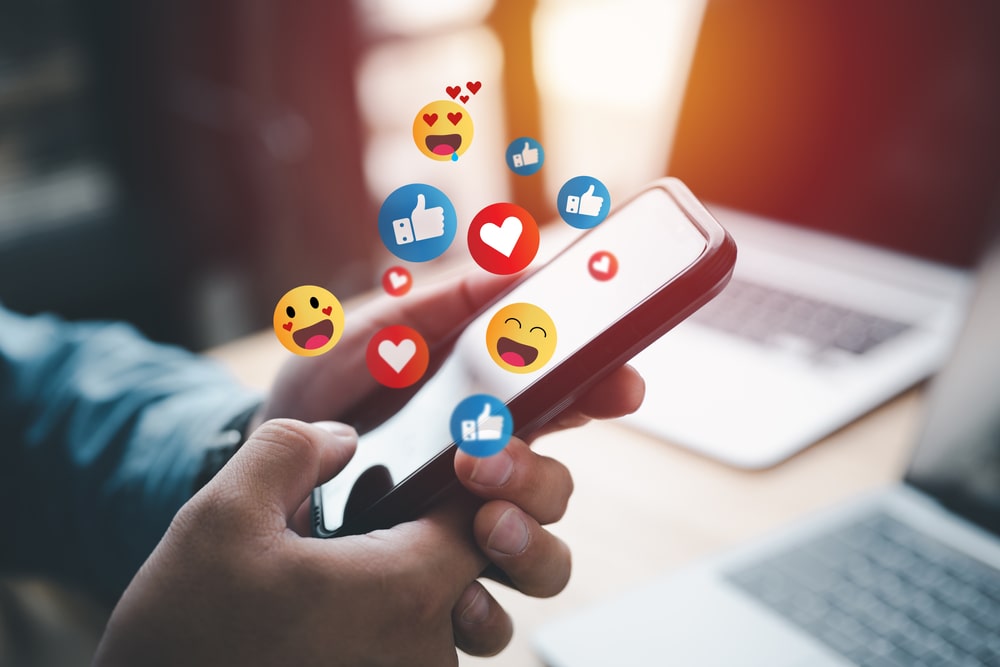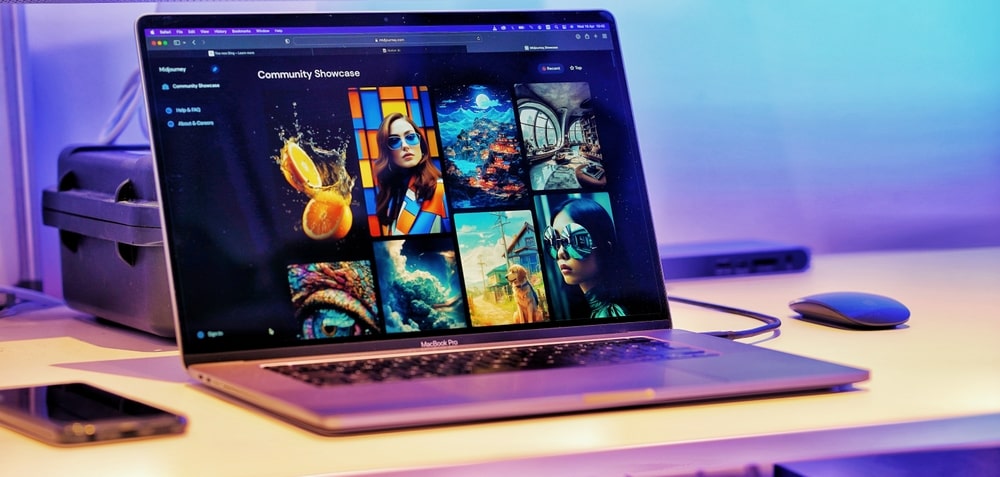In the realm of artificial intelligence, OpenAI has continually pushed the boundaries of what’s possible with machine learning and natural language processing. Their latest breakthrough, Sora, represents a huge leap forward in video creation, enabling the generation of realistic and imaginative videos from text instructions alone.
In this article, we explore Sora in depth, looking at its capabilities, limitations and how it can help businesses create video content.
History of Video Creation within Marketing
The history of video creation within marketing traces back to the mid-20th century, coinciding with the rise of television as a dominant medium for advertising. Brands recognised the power of video commercials to capture the attention of mass audiences. These early commercials relied on catchy jingles, memorable slogans, and persuasive visuals to promote products and services.
Expansion into Corporate Videos
Corporate video production gained momentum in the latter half of the 20th century. Companies utilised video content for promotional purposes, employee training, and corporate communications. Distributing content via VHS tapes and DVDs, corporations found videos to be an effective tool for marketing and internal communication.
The Rise of Digital Marketing
The advent of the internet and digital technologies transformed marketing practices. Video content migrated online with platforms like YouTube and social media. Brands embraced video as a vital component of digital marketing strategies, creating diverse content to engage audiences across various channels.

The Era of Viral Marketing
Viral marketing emerged as a phenomenon in the digital age, fuelled by shareable video content. Brands crafted emotionally resonant and entertaining videos designed to go viral, fostering brand awareness and engagement through user-generated sharing.
AI with Video Creation
As we have seen, the integration of artificial intelligence into video creation has revolutionised marketing practices. AI-powered tools enable brands to streamline video production processes, personalise content at scale, and optimise performance based on data-driven insights.
From automated video editing to predictive content recommendations, AI tools like Sora empower marketers to create compelling video campaigns that resonate with audiences in the digital era. As AI continues to advance, its role in video creation within marketing will only grow, ushering in a new era of innovation and efficiency in content production and distribution.
So, what actually is Sora?
At its core, Sora is an AI tool that generates video content from text inputs.
It combines natural language understanding and image generation capabilities, leveraging advanced deep learning techniques to interpret textual descriptions and translate them into vivid video content. Unlike traditional methods of content creation, which often require extensive manual labour and artistic expertise, Sora streamlines the process by automating the generation of video based solely on textual inputs.

Understanding Sora's Capabilities
Sora has the ability to understand text descriptions and translate them into compelling videos. Through cutting-edge deep learning techniques, Sora analyses the context and emotions embedded within the text, enabling it to generate scenes that resonate with viewers on a profound level. Whether it’s a tranquil landscape, a bustling cityscape, or a mythical realm, Sora can bring any vision to life with remarkable fidelity and detail.
In Open AI’s words, “Sora can generate videos up to a minute long while maintaining visual quality and adherence to the user’s prompt.” This is an incredible feat that Open AI have managed to achieve and the capabilities of this tool are only set to expand moving forward.
Let’s take a look at some Sora generated videos:
Prompt: ‘Several giant wooly mammoths approach treading through a snowy meadow, their long wooly fur lightly blows in the wind as they walk, snow covered trees and dramatic snow capped mountains in the distance, mid afternoon light with wispy clouds and a sun high in the distance creates a warm glow, the low camera view is stunning capturing the large furry mammal with beautiful photography, depth of field.’
As you can see, Sora is able to create a high quality, detailed video from a short user-inputted text prompt which is not far from traditional video footage. The AI model is able to interpret textual descriptions and translate them into captivating visual representations.
Prompt: ‘Animated scene features a close-up of a short fluffy monster kneeling beside a melting red candle. The art style is 3D and realistic, with a focus on lighting and texture. The mood of the painting is one of wonder and curiosity, as the monster gazes at the flame with wide eyes and open mouth. Its pose and expression convey a sense of innocence and playfulness, as if it is exploring the world around it for the first time. The use of warm colors and dramatic lighting further enhances the cozy atmosphere of the image.’
As well as lifelike video creation, Sora also has the ability to create animated videos, merging storytelling with cutting-edge technology. With Sora’s capabilities, users can unleash their creativity, crafting animated narratives that captivate and inspire.
By seamlessly translating text instructions into animated videos, Sora empowers creators to explore new realms of storytelling and visual communication. From educational animations to marketing campaigns and beyond, Sora’s animated video creation capabilities hold immense potential for revolutionising how we engage with content in the digital age.

What are Sora’s Limitations?
Sora is in its infancy and as a result, it comes with limitations.
As with most AI tools, they are still learning and are constantly evolving to develop in their efficiency and functionality. The videos created by Sora are incredible but we believe that there is still an evident gap between AI generated videos and human generated videos.

From a technical standpoint, Sora’s inability to understand context and nuance beyond the scope of its training data is one of the main limitations. While Sora excels at generating visuals based on explicit text instructions, it may struggle to interpret implicit meaning, cultural references, or subtle nuances present in human communication. This can result in misinterpretations or inaccuracies in the generated content.
Moreover, Sora’s output may lack the human touch and creative intuition that comes with human-authored content. While it can produce visually appealing scenes, Sora may struggle to infuse emotion, storytelling, or artistic flair into its creations, leading to a lack of authenticity or depth in the final output.
That’s until robots can learn emotions, but we’re not there yet…

Risks Surrounding Sora & AI
While Sora presents groundbreaking opportunities for creativity and innovation, it also comes with inherent risks that must be carefully considered and managed.
One significant risk is the potential for bias in the generated content. Like any AI tool, Sora’s output may be influenced by the data it was trained on, which can reflect societal biases or stereotypes. This could result in the unintentional propagation of harmful or discriminatory content, undermining brand reputation and alienating audiences.
Another concern is the ethical implications of AI-generated content. Sora’s ability to create realistic scenes from text instructions raises questions about the authenticity and integrity of visual media. There’s a risk of misuse, including the creation of deceptive or misleading content, which could erode trust and credibility in online platforms.

Furthermore, there are privacy considerations associated with Sora’s usage of textual data. Businesses must ensure that sensitive information is not inadvertently included in text instructions, potentially exposing confidential or proprietary data to unauthorised access or misuse.
Additionally, there’s the risk of overreliance on AI-generated content, leading to a loss of human creativity and originality. While Sora can streamline the content creation process, it’s essential to maintain a balance between automation and human input to ensure that the final output remains authentic and resonates with audiences.
Sora’s Benefits for Marketing Campaigns
Video content has always been an essential component of successful marketing campaigns. Sora offers a great number of benefits for businesses looking to elevate their marketing campaigns and engage audiences more effectively.
Enhanced Visual Storytelling
Sora empowers marketers to transform their ideas and messages into visually compelling narratives. By converting text inputs into dynamic video presentations, Sora enables marketers to convey complex concepts and brand stories in a more engaging and memorable way. This enhanced visual storytelling capability helps capture the attention of audiences and leave a lasting impression.
Streamlined Content Creation
Traditional video production processes can be time-consuming and resource-intensive. Sora streamlines the content creation process by automating many of the tedious tasks involved in video production. Business owners can generate high-quality videos quickly and efficiently, allowing them to focus on strategy and creativity rather than logistics.
Cost-Effective Solutions
Hiring professional videographers and editors can be expensive, especially for businesses operating on a limited budget. Sora provides a cost-effective alternative by eliminating the need for external contractors and reducing production costs. Businesses can create professional-looking videos in-house using Sora, saving both time and money.

Personalised Messaging
One of Sora’s most powerful features is its ability to tailor video content to specific audiences and demographics. Marketers can input customised text messages, product descriptions, or promotional offers into Sora, allowing them to create personalised videos for different target segments. This personalised approach helps increase relevance and resonance with viewers, leading to higher engagement and conversion rates.
Scalable Solutions
Whether launching a small-scale campaign or a large-scale initiative, Sora offers scalable solutions to meet the needs of businesses of all sizes. Marketers can leverage Sora to produce a single promotional video or generate a series of videos for an entire marketing campaign. This scalability allows businesses to adapt their video content strategy to changing market conditions and consumer preferences.
Sora’s Benefits for Businesses
In addition to its advantages for marketing campaigns, Sora ultimately offers a range of benefits for the growth of businesses across various industries.

Brand Awareness and Visibility
Video content has become increasingly important for building brand awareness and visibility in today’s competitive marketplace. By incorporating Sora-generated videos into their online presence, businesses can attract more attention from potential customers and stand out from the competition. High-quality video content helps reinforce brand messaging and values, ultimately leading to stronger brand recognition.
Increased Website Traffic
Search engines like Google prioritise multimedia content, including videos, in their search results. By embedding Sora-generated videos into their webpages, businesses can improve their search engine ranking and attract more organic traffic to their websites. This increased visibility helps drive qualified leads and potential customers to the business’s online properties, resulting in higher conversion rates and sales.
Product Education and Demonstration
Sora’s ability to transform text inputs into informative and visually engaging videos makes it an invaluable tool for product education and demonstration. Businesses can use Sora to create instructional videos, product demos, and how-to guides that help customers better understand their offerings. This educational content not only helps drive sales but also enhances customer satisfaction and loyalty.
Social Media Engagement
Video content performs exceptionally well on social media platforms, where visual storytelling reigns supreme. Businesses can leverage Sora to create attention-grabbing videos for sharing on social media channels like Facebook, Instagram, and YouTube. These videos can help businesses increase their social media engagement, reach a broader audience, and foster meaningful connections with customers and followers.

Data-Driven Insights
Sora’s analytics capabilities provide businesses with valuable insights into the performance of their video content. Marketers can track metrics such as views, engagement, and conversion rates to measure the effectiveness of their campaigns and identify areas for improvement. This data-driven approach enables businesses to make informed decisions about their video content strategy and optimize their marketing efforts for maximum impact.
In Summary
Sora represents a new era of video creation. Its revolutionary development represents a significant leap forward in the field of generative AI, offering endless possibilities for creative expression, storytelling, and visual communication.
Ultimately, Sora and other AI video creation tools has the potential to revolutionise the way we create, consume, and interact with visual content. By embracing Sora as a catalyst for creativity and innovation, businesses can stay ahead of the curve, captivate audiences, and drive meaningful connections in an increasingly digital and visual world.




